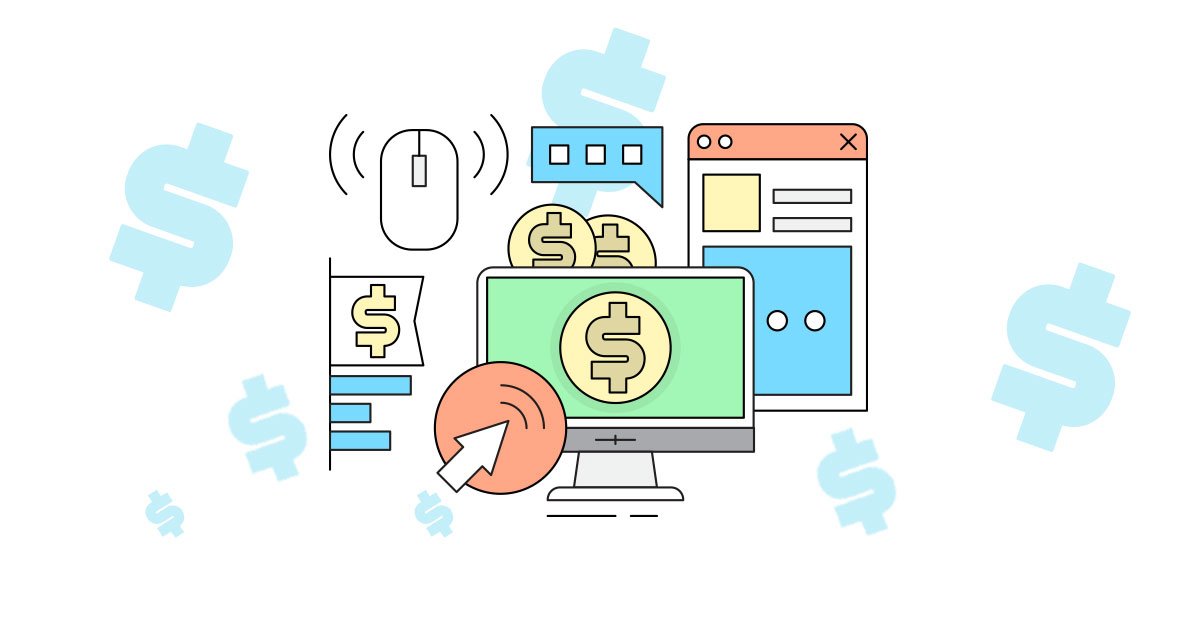
When the online advertising industry started in the mid-1990’s, media was mostly bought and sold on a CPM (Cost per Thousand Impressions) basis, the same method that had been used for offline media for decades, because there was not yet any new online-specific media-buying method.
Hundreds of major brands were paying for clicks by the end of 1997. Goto.com (which became Overture, which became part of Yahoo!) introduced a “Pay Per Click” (PPC) search engine concept in 1998. Google started search engine advertising in 1999, and introduced AdWords in 2000. The appeal of PPC to advertisers was obvious: Why pay just for an ad to be viewed when, instead, an advertiser could pay only for actual clicks on their ad, implying user interest in the product or service being advertised.
We have been in the online display (banner) advertising industry since 1999. During this time and, particularly in the past ten years or so, our observation has consistently been that PPC campaigns generally don’t work well for display media campaigns that have some form of user action as the objective. For most of our advertisers’ campaigns, we are click-rate- and eCPC-agnostic. We care mostly about conversion rate and eCPA, rather than click rate and eCPC. The media buying model we mostly use is CPM, with most campaigns optimized for conversions and eCPA.
There are many significant problems with buying display media on a PPC basis. Fundamentally, if an advertiser is paying for clicks, the implication is “the more clicks the better”, and “the higher the CTR the better”. Many advertisers and agencies mistakenly assume that higher CTR and more clicks will lead to higher conversion and better (lower) eCPA. In fact, what we have observed over many years is the opposite: there is usually a reverse correlation between click-rate and conversion rate. This observation has been corroborated by many companies and industry experts with whom we’ve discussed this.
Most major DSP’s have a fundamental setting for campaign managers to choose to optimize campaigns by CTR / eCPC or by conversion / eCPA. This basic setting in DSP’s is based upon the reality that optimizing campaigns for clicks or conversions is an “either / or” binary choice. Higher CTR and more clicks do not necessarily lead to more conversions. Most PPC advertisers we’ve spoken with over the past few years have mentioned ever-escalating CPC’s, the continuing issue of click fraud, higher eCPA’s, and significantly decreased ROI on click-based campaigns.
Years ago, search PPC often helped propel significant growth, profitably, for many advertisers. But, these days, we hear far fewer success stories of profitable growth of advertisers through search PPC. Certainly, search PPC can be very beneficial for some advertisers as part of a multi-faceted online marketing plan. But many agencies and advertisers are over-reliant on search PPC advertising, while under-spending and missing huge opportunities in other areas of the vast online marketing ecosystem.
PPC campaigns are “easy money” for publishers, networks, search engines, and media agencies. They make a lot of money selling clicks. Media sellers welcome PPC buyers with open arms, knowing how easy it is to maximize yields on PPC campaigns. PPC-based platforms optimize yields for media sellers — at the expense of media buyers. It isn’t a zero sum game. If advertisers pay higher PPC’s without a commensurate increase in conversions and sales, they lose.
For agencies or internal media-buying staff, PPC campaigns are very easy to manage. It takes relatively little skill or work to maximize CTR and clicks. Delivering conversions at cost-effective eCPA for advertisers requires more sophisticated technology, a higher level of skill and knowledge, much hard work, and continuous campaign optimization.
Many online advertisers, largely due to their continuously decreasing ROI in search advertising, are now increasing their spend in display advertising. However, regrettably, they are using search-centric, PPC-based media buying methods to buy display media. Media buying and campaign management for display media campaigns are very different from media buying and campaign management for search PPC campaigns.
Every day we see examples of very bad display media buying and campaign management, often being done by search-centric agencies that lack experience and skill in buying display media and managing display campaigns. Some agencies also lack access to major DSP’s, and, thus, they are unable to leverage the power of programmatic RTB media buying.
Knowing what we know after 18 years in the online media industry, we are perplexed as to why so many advertisers — including some very substantial companies we expect would know better — take 20 year-old, search-centric PPC-based media buying and campaign management methods and use these same old methods in display advertising, where they are not likely to work well or, in any case, not as well as much newer methods that are better for maximizing advertiser ROI on display media campaigns.
Every day, we see huge amounts of money being wasted and huge business opportunities being lost by advertisers and agencies using outdated PPC-based media buying and click-based campaign management techniques, rather than CPM-based media buying and conversion-based campaign optimization.
We always eagerly welcome competitive challenges, particularly when we are invited to compete against search-centric agencies using obsolete PPC-based methods for display advertising. Online advertisers are often amazed to learn how much they have been over-spending and under-performing when they start to use proper display-centric media buying and campaign management methods.
Click to learn more about Globalis Media’s services.


